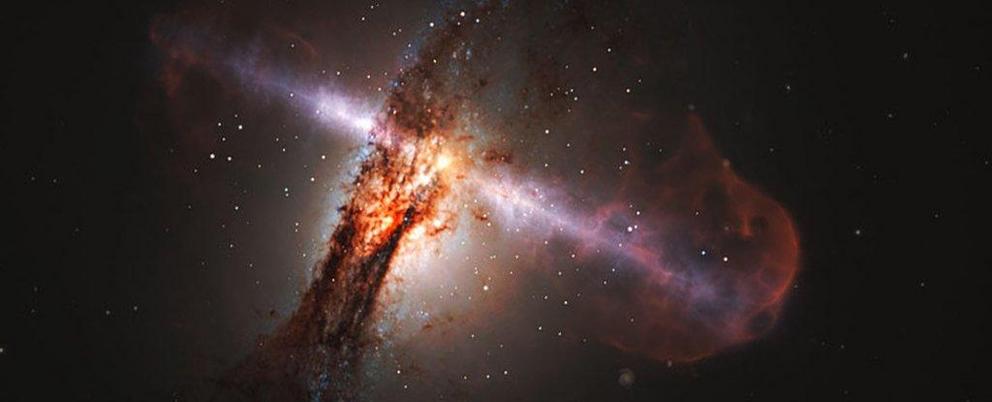We just found the brightest object in the early universe - 13 billion light-years away
Whoahhh.
Astronomers have found the brightest object ever discovered in the early Universe, 13 billion light-years away - a quasar from a time when our Universe was just seven percent of its current age.
A quasar is a galaxy that orbits a supermassive black hole actively feeding on material. The light and radio emissions we see are caused by material around the black hole, called an accretion disk.
This disk contains dust and gas swirling at tremendous speeds like water going down a drain, generating immense friction as it's pulled by the massive gravitational force of the black hole in the centre.
As they consume matter, these quasar black holes expel powerful jets of plasma at near light-speed from the coronae - regions of hot, swirling gas above and below the accretion disk.
These jets are extremely bright in the radio frequency spectrum. It was this signal emanating from the newly discovered quasar, named PSO J352.4034-15.3373 (P352-15 for short), that was picked up by the Very Long Baseline Array radio telescope.
"There is a dearth of known strong radio emitters from the Universe's youth and this is the brightest radio quasar at that epoch by a factor of 10," said astrophysicist Eduardo Bañados of the Carnegie Institution for Science in Pasadena, California.

The VLBA's observations showed the quasar split into three distinct components, for which there are two possible interpretations.
The first is that the black hole is at one end, and the two other components are parts of a single jet. The second is that the black hole is in the middle, with a jet on either side.
According to optical telescopes, which show the quasar in visible light, the position of the black hole aligns with one of the end components - making the first interpretation the most likely.
This means that, by studying and analysing the two parts of the jet, astrophysicists may be able to measure how fast it is expanding.
"This quasar may be the most distant object in which we could measure the speed of such a jet," said NRAO astronomer Emmanuel Momjian.
On the other hand, if the black hole turns out to be in the centre, it means the jets are much smaller - which would mean a much younger object, or one that is embedded in dense material that's slowing down the jets.
Further research will need to be done to determine which of the two scenarios is true. In the meantime, P352-15 is still a highly valuable object for study.
It's not as old as J1342+0928, a quasar also discovered by a team led by Bañados, from when the Universe was only five percent of its current age.
But the light of quasars can be used to study the intergalactic medium. This is because the hydrogen it travels through on its long journey to Earth changes the light's spectrum - recently, a quasar was used in just this way to find the Universe's missing baryonic matter in the space between galaxies.
P352-15 has great potential as a tool of this nature.
"We are seeing P352-15 as it was when the Universe was less than a billion years old," said astrophysicist Chris Carilli of NRAO.
"This is near the end of a period when the first stars and galaxies were re-ionising the neutral hydrogen atoms that pervaded intergalactic space. Further observations may allow us to use this quasar as a background 'lamp' to measure the amount of neutral hydrogen remaining at that time.
"This quasar's brightness and its great distance make it a unique tool to study the conditions and processes that prevailed in the first galaxies in the Universe."
The research has been published in The Astrophysical Journal and The Astrophysical Journal Letters.

